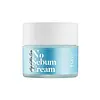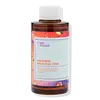What's inside
What's inside
 Key Ingredients
Key Ingredients

 Benefits
Benefits

 Concerns
Concerns

No concerns
 Ingredients Side-by-side
Ingredients Side-by-side

Butylene Glycol
HumectantDimethicone
EmollientAlcohol
AntimicrobialCyclopentasiloxane
EmollientCaprylic/Capric Triglyceride
Masking1,2-Hexanediol
Skin ConditioningPEG-10 Dimethicone
Skin ConditioningPolysilicone-11
Glycerin
HumectantGlycereth-26
HumectantPEG-240/Hdi Copolymer Bis-Decyltetradeceth-20 Ether
StabilisingSilica
AbrasivePanthenol
Skin ConditioningAmmonium Acryloyldimethyltaurate/Vp Copolymer
Isohexadecane
EmollientBetaine
HumectantCitric Acid
BufferingTocopheryl Acetate
AntioxidantCI 77120
Cosmetic ColorantZinc Oxide
Cosmetic ColorantAmmonium Polyacryloyldimethyl Taurate
Emulsion StabilisingParfum
MaskingPolysorbate 20
EmulsifyingDisodium EDTA
Polysorbate 80
EmulsifyingVaccinium Angustifolium Fruit Extract
Skin ProtectingRubus Fruticosus Fruit Extract
AstringentEuterpe Oleracea Fruit Extract
Rubus Idaeus Fruit Extract
AstringentFragaria Chiloensis Fruit Extract
Skin ConditioningVaccinium Myrtillus Fruit Extract
Skin ConditioningVaccinium Macrocarpon Fruit Extract
AstringentSodium Hyaluronate
HumectantMentha Viridis Leaf Oil
AstringentAronia Melanocarpa Fruit Extract
Skin ConditioningHydrogen Dimethicone
Melia Azadirachta Leaf Extract
Skin ConditioningMelia Azadirachta Flower Extract
Skin ConditioningAmino Esters-1
Skin ConditioningCoccinia Indica Fruit Extract
Skin ConditioningSolanum Melongena Fruit Extract
Skin ConditioningAloe Barbadensis Flower Extract
EmollientOcimum Sanctum Leaf Extract
Skin ConditioningOcimum Basilicum Flower/Leaf/Stem Extract
TonicCurcuma Longa Root Extract
MaskingCorallina Officinalis Extract
Skin ConditioningButylene Glycol, Dimethicone, Alcohol, Cyclopentasiloxane, Caprylic/Capric Triglyceride, 1,2-Hexanediol, PEG-10 Dimethicone, Polysilicone-11, Glycerin, Glycereth-26, PEG-240/Hdi Copolymer Bis-Decyltetradeceth-20 Ether, Silica, Panthenol, Ammonium Acryloyldimethyltaurate/Vp Copolymer, Isohexadecane, Betaine, Citric Acid, Tocopheryl Acetate, CI 77120, Zinc Oxide, Ammonium Polyacryloyldimethyl Taurate, Parfum, Polysorbate 20, Disodium EDTA, Polysorbate 80, Vaccinium Angustifolium Fruit Extract, Rubus Fruticosus Fruit Extract, Euterpe Oleracea Fruit Extract, Rubus Idaeus Fruit Extract, Fragaria Chiloensis Fruit Extract, Vaccinium Myrtillus Fruit Extract, Vaccinium Macrocarpon Fruit Extract, Sodium Hyaluronate, Mentha Viridis Leaf Oil, Aronia Melanocarpa Fruit Extract, Hydrogen Dimethicone, Melia Azadirachta Leaf Extract, Melia Azadirachta Flower Extract, Amino Esters-1, Coccinia Indica Fruit Extract, Solanum Melongena Fruit Extract, Aloe Barbadensis Flower Extract, Ocimum Sanctum Leaf Extract, Ocimum Basilicum Flower/Leaf/Stem Extract, Curcuma Longa Root Extract, Corallina Officinalis Extract
Water
Skin ConditioningGlycerin
HumectantNiacinamide
Smoothing1,2-Hexanediol
Skin ConditioningPropanediol
SolventArbutin
AntioxidantBetaine
HumectantGlycyrrhiza Glabra Root Extract
Bleaching3-O-Ethyl Ascorbic Acid
Skin ConditioningEthylhexylglycerin
Skin ConditioningCarbomer
Emulsion StabilisingTromethamine
BufferingTrisodium Ethylenediamine Disuccinate
Theobroma Cacao Seed Extract
AntioxidantSodium Hyaluronate
HumectantDextrin
AbsorbentTocopherol
Antioxidant
 Reviews
Reviews

Ingredients Explained
These ingredients are found in both products.
Ingredients higher up in an ingredient list are typically present in a larger amount.
1,2-Hexanediol is a synthetic liquid and another multi-functional powerhouse.
It is a:
- Humectant, drawing moisture into the skin
- Emollient, helping to soften skin
- Solvent, dispersing and stabilizing formulas
- Preservative booster, enhancing the antimicrobial activity of other preservatives
Betaine is a common humectant (a substance that promotes retention of moisture). It's known to be gentle on the skin and can help balance hydration.
This ingredient is best for improving hydration and soothing irritated skin. Studies also show it helps even out skin tone.
Fun fact: Betaine is naturally created in the skin and body. The kind found within cosmetic products can be either plant-derived or synthetic.
Another name for betaine is trimethylglycine.
Learn more about BetaineGlycerin is already naturally found in your skin. It helps moisturize and protect your skin.
A study from 2016 found glycerin to be more effective as a humectant than AHAs and hyaluronic acid.
As a humectant, it helps the skin stay hydrated by pulling moisture to your skin. The low molecular weight of glycerin allows it to pull moisture into the deeper layers of your skin.
Hydrated skin improves your skin barrier; Your skin barrier helps protect against irritants and bacteria.
Glycerin has also been found to have antimicrobial and antiviral properties. Due to these properties, glycerin is often used in wound and burn treatments.
In cosmetics, glycerin is usually derived from plants such as soybean or palm. However, it can also be sourced from animals, such as tallow or animal fat.
This ingredient is organic, colorless, odorless, and non-toxic.
Glycerin is the name for this ingredient in American English. British English uses Glycerol/Glycerine.
Learn more about GlycerinSodium Hyaluronate is hyaluronic acid's salt form. It is commonly derived from the sodium salt of hyaluronic acid.
Like hyaluronic acid, it is great at holding water and acts as a humectant. This makes it a great skin hydrating ingredient.
Sodium Hyaluronate is naturally occurring in our bodies and is mostly found in eye fluid and joints.
These are some other common types of Hyaluronic Acid:
Learn more about Sodium Hyaluronate